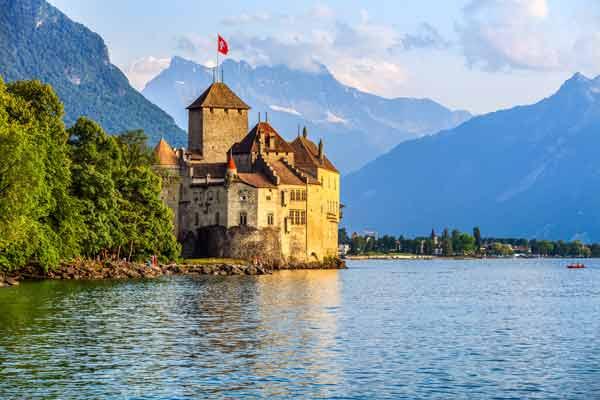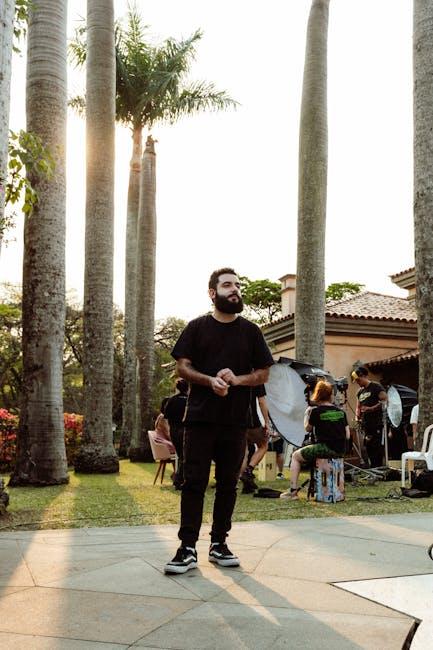In the intricate world of movie production, where storytelling transcends mere dialogue and acting, location scouting emerges as a pivotal element that shapes the cinematic experience. This crucial process involves more than just finding a picturesque backdrop; it requires a nuanced understanding of the narrative, an eye for detail, and the ability to foresee logistical challenges. As filmmakers strive to create immersive worlds that captivate audiences, the significance of location scouting cannot be overstated. By examining its impact on visual storytelling, budget management, and logistical planning, we uncover how this foundational step in production serves as both a canvas and a catalyst, transforming scripts into vivid, tangible realities.
Understanding the Strategic Importance of Location Scouting
In the realm of filmmaking, the selection of a location can make or break the narrative’s authenticity and visual appeal. Location scouting is a critical strategic process that aligns the film’s vision with its physical environment, ensuring that each scene resonates with the intended mood and context. This involves more than just finding a visually appealing backdrop; it requires a deep understanding of the story, character dynamics, and logistical considerations.
Key factors influencing this process include:
- Accessibility: Evaluating ease of access for the cast and crew, as well as equipment transportation.
- Budget Constraints: Balancing location costs with production budgets without compromising quality.
- Weather Conditions: Anticipating seasonal changes that could affect filming schedules.
- Legal Permissions: Navigating local regulations and obtaining necessary permits for shooting.
By meticulously considering these elements, filmmakers ensure that each location not only supports the narrative but also enhances the overall production quality, making location scouting an indispensable component of successful movie production.

Analyzing the Impact of Real-world Settings on Cinematic Storytelling
In the realm of cinematic storytelling, the backdrop against which a narrative unfolds is more than just a physical space; it is a character in its own right. The real-world settings chosen during location scouting can significantly influence the tone, atmosphere, and authenticity of a film. These environments not only provide visual authenticity but also enhance the emotional resonance of the story. For instance, a bustling urban landscape can evoke a sense of chaos and anonymity, while a serene countryside might underscore themes of isolation or introspection.
Consider the following impacts of real-world settings on storytelling:
- Authenticity: Filming in actual locations rather than constructed sets can lend a sense of realism that captivates audiences.
- Symbolism: Specific locations can symbolize underlying themes, such as freedom or entrapment, enriching the narrative layers.
- Character Development: The environment can reflect or contrast with a character’s internal journey, adding depth to their evolution.
Ultimately, the choice of setting is a powerful tool in the filmmaker’s arsenal, capable of transforming a script from mere words into a vivid, immersive experience.

Key Criteria for Selecting the Perfect Filming Location
- Visual Appeal: The aesthetic value of a location is paramount. It must align with the director’s vision and enhance the narrative. Consider the architecture, landscape, and natural light.
- Logistical Feasibility: Evaluate the accessibility for crew and equipment. Proximity to accommodations and local services can significantly impact production efficiency.
- Cost-Effectiveness: Budget constraints are always a concern. Analyze permit costs, potential fees, and local incentives. A beautiful location that strains the budget may not be ideal.
- Weather Conditions: Predictable weather is crucial for maintaining continuity and scheduling. Research seasonal patterns to avoid disruptions.
- Authenticity and Relevance: The location should reflect the story’s setting authentically. A mismatch can detract from the film’s believability and audience immersion.
Incorporating these criteria during location scouting not only enhances the visual storytelling but also streamlines the production process. An optimal choice ensures that the location becomes a character in its own right, adding depth and dimension to the cinematic experience.

Maximizing Efficiency and Creativity Through Effective Location Scouting
In the realm of movie production, the role of a location scout is pivotal in crafting the visual and emotional tone of a film. By identifying environments that not only fit the script but also inspire innovation, location scouts can significantly enhance both the efficiency and creativity of a project. Effective location scouting involves a strategic approach where several key factors are meticulously considered:
- Logistical Feasibility: Ensuring easy access, permitting, and availability can streamline production schedules and reduce unforeseen costs.
- Aesthetic Alignment: Locations must resonate with the film’s narrative and artistic vision, providing authenticity and depth to the story.
- Technical Requirements: Assessing factors such as lighting, sound, and space to accommodate equipment and crew needs.
- Creative Potential: Scouting for spaces that offer unique visual elements or dynamic backgrounds can ignite new ideas and perspectives.
By balancing these elements, location scouts can not only optimize production efficiency but also unlock a reservoir of creative possibilities, setting the stage for cinematic excellence.

